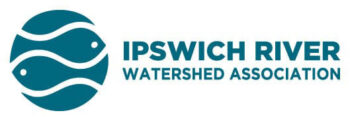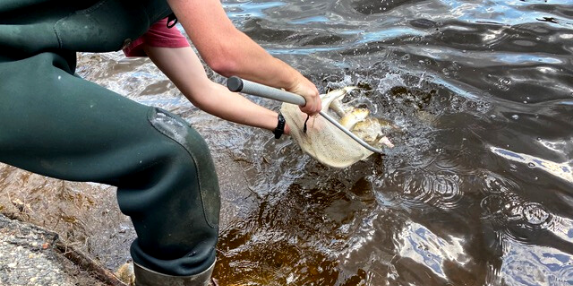River herring are an important part of the ecosystem in coastal rivers. The Ipswich River once had one of the largest runs of river herring on the North Shore. Things changed over a century ago. Dams, reservoirs and other barriers blocked adults from returning to historic spawning ponds, causing the run to decline to a small fraction of what it once was. The volunteer Herring Count has taken place each spring for the past 23 years (except 2020) to document the run size for fisheries managers.
Along with habitat assessments, these counts were an important part of the decision making process to restock river herring in the watershed. Not only were herring stocked in the main stem of the river this spring, but for the first time in centuries, herring were introduced to Hood Pond. The reintroduced herring will help grow the population. Many volunteers have contributed to the ongoing effort to restore the herring fishery and the overall vitality of the ecology of the river.
The 2021 herring count began on April 1st and ended on June 5th. Volunteers sign up for 10 minute counts each week to watch the fish ladder in Ipswich and count however many herring they see. The results are shared with the Massachusetts Division of Marine Fisheries to calculate a run size estimate. This year, volunteers observed 54 herring over this time period, which is a little above the herring count average of 47. The most seen was 133 in 2008 and the fewest was 14 in 2014.
The Massachusetts Division of Marine Fisheries restocked Hood Pond for the first time in April and May with a total of 500 alewives (one type of river herring). The other type, known as blueback herring, were stocked in the Ipswich River in Topsfield in May. Both are migratory fish that travel from the ocean to freshwater each spring. They look almost identical, but a major difference is that alewives need to reach freshwater ponds to spawn, where blueback herring will spawn in rivers or streams. We took advantage of these traits in planning a restocking program. This was the result of habitat assessment work performed in the pond over several years. Those assessments determined the suitability of the site to support adults and juveniles. Alewives came from the Parker River in Newbury and blueback herring came from the Mystic River in Arlington, where they are abundant. Ideally, this will give the population a chance to grow as juvenile herring should instinctively return to where they hatched in the future.
The restocking program is also part of the Howlett Brook Restoration Project. Herring hatched in Hood Pond will leave in the fall, making their way to the ocean via Pye Brook, Howlett Brook and the Ipswich River. After maturing for 3 or 4 years, these fish will instinctively want to return and continue their life cycle. Many volunteers contributed to the success of this accomplishment.
Herring count volunteers are central to the goal of restoring the Ipswich River herring fishery as well as our partners at the Division of Marine Fisheries. The Nor’East Chapter of Trout Unlimited and individual volunteers like Brandon Boyd also made a difference through channel maintenance work on Pye Brook. Friends of Hood Pond have also contributed to the protection of Hood Pond. More work needs to be done to restore habitat and fisheries in the watershed and this is a good milestone in that journey.

